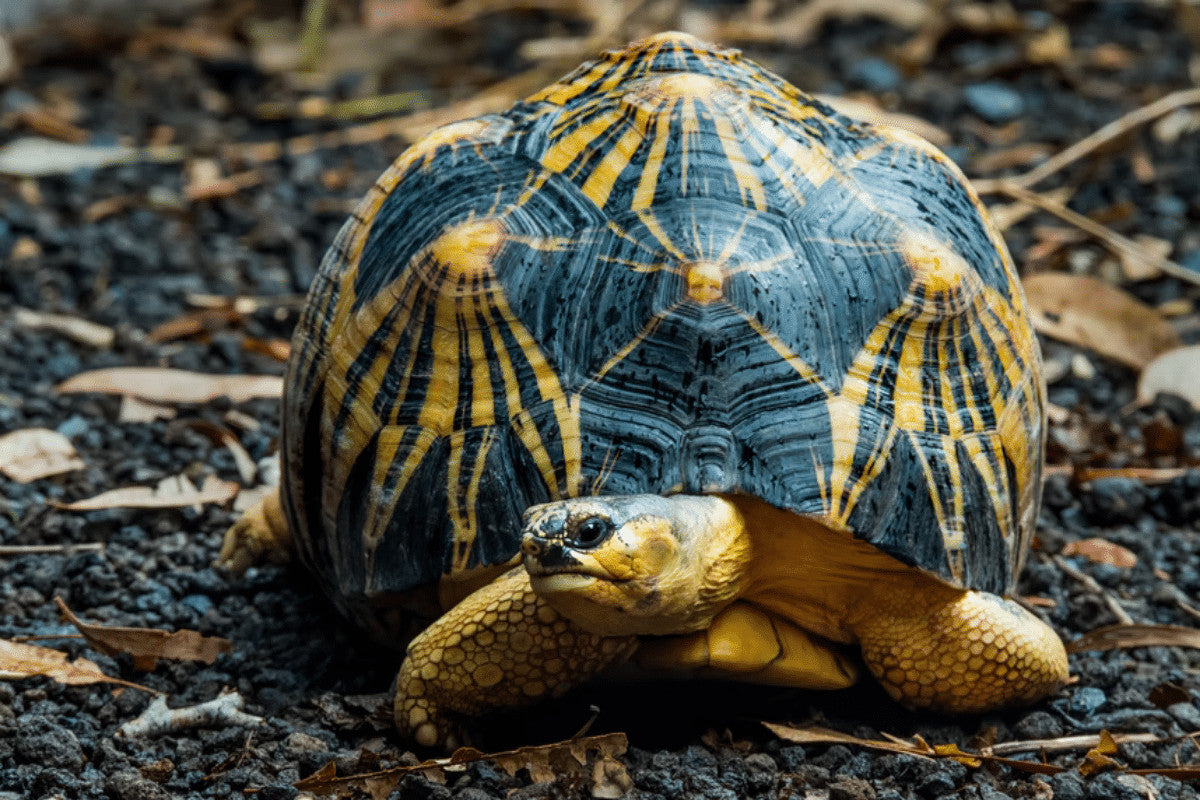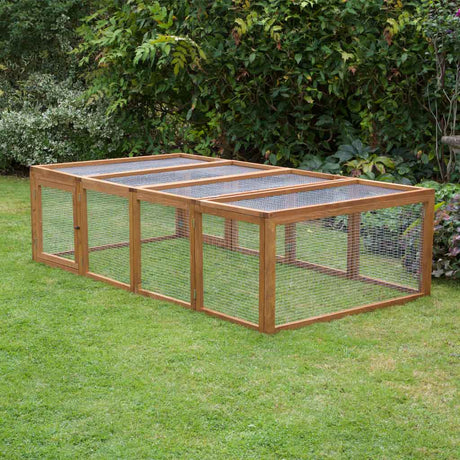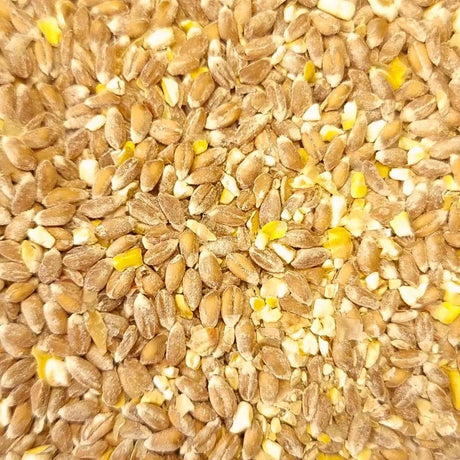As one of the most beautifully decorated tortoises in the world, the Indian star tortoise (Geochelone elegans) is a very popular pet. But this tortoise has very special requirements and It can be a challenge to create a suitable environment for them and to give them everything that they need. Many Indian stars die in captivity at an early age due to a lack of understanding of their needs. So read on for a full explanation of this fascinating species and how best to care for them.
(function(w,d){ var e=d.createElement('script');e.type='text/javascript';e.async=true; e.src=(d.location.protocol=='https:'?'https':'http')+'://cdn.clerk.io/clerk.js'; var s=d.getElementsByTagName('script');s.parentNode.insertBefore(e,s); w.__clerk_q=w.__clerk_q||[];w.Clerk=w.Clerk||function(){w.__clerk_q.push(arguments)}; })(window,document); Clerk('config', { key: 'wDPCBCLbl9Jl6kgs9RbwwrMsDb8esksq' });
Fact File
To ensure we are doing the best by our pet tortoises, we need to know as much about them as possible. So, without further ado, here’s our guide on the Indian star tortoise.
Common Names
They are most commonly known as the Indian star tortoise (Geochelone elegans) or just the star tortoise, due to their distinctive appearance.
Lifespan
They can live up to 80 years old with the right care, however, they usually live to around 50 years of age.
Description
The most recognizable part of the Indian star tortoise is the beautiful pattern of their shell. The scutes are dark brown in colour with contrasting yellow stripes. These yellow markings extend from the centre of each scute and give this tortoise its name as they create a star pattern. The tortoise’s legs, head, and tail are all tan in colour, too.
Despite their distinctive appearance, baby Indian star tortoises hatch without the patterns on their shell and are almost completely brown in colour with small splotches of yellow. Young tortoises will begin to develop the distinct pattern as they grow.

Their shell grows tall and is very rounded in shape which is another distinctive feature when compared to the shells of other tortoises which are often more flat.
The Indian star tortoise size varies from 7-12 inches long, with females growing to the larger end of that range and males generally staying on the smaller side.
Males also have longer and thicker tails than females and, if you look at the underside of their shell, you will notice that the male’s plastron is slightly concave in shape whereas the female’s is completely flat. This is to make it easier for males to mount females during copulation.
Habitat
Found in the dry lowland forests of Pakistan, Sri Lanka, and India, the star tortoises prefer high humidity and temperature. They are an adaptable species who can survive in moist climates, however will hibernate when the temperatures drop too low.
Behaviours
Like most tortoises, the Indian star tortoises are most active in the early morning and late afternoon so as to avoid the hottest parts of the day. They are highly active during the rainy season where there is lots of food to browse and temperatures are a little cooler. During these times, they will move around throughout most of the day.
Their unique appearance serves as camouflage in the vegetation when they hide beneath bushes throughout the day.
The Indian star tortoise likes water more than other species of tortoise so you may find them lounging in small pools to cool off. With this in mind, these tortoises cannot swim therefore should never be in water where they cannot comfortably stand up as they will drown.
Reproduction
Indian star tortoises are generally solitary and will mate during the rainy season, when they are much more active. This time of the year usually comes between June and November, and males will actively compete with other males for a mate. They will display signs of aggression towards each other and will often try to flip other males onto their backs.

Despite male-male aggression, their courtship is relatively subdued and they will not bite or ram at female tortoises as other species might.
Upto 3 months after mating, egg laying females will become restless and begin searching for a nest. Once a suitable site has been found, the female will urinate to soften the ground and begin to dig. They will dig shallow nests and here she will lay 5-7 eggs per clutch; however, she can have up to 9 clutches in a year.
Incubation will last for 90-170 days and the hatchlings will emerge from the nest and begin living on their own without any parental care, similarly to other species of reptile. The baby Indian star tortoise is completely independent and will stay close to the nest looking for food and staying sheltered until they are old enough to move further away.
Conservation Status
Indian star tortoises are classed as vulnerable according to the IUCN red list and are covered by the Wildlife Protection Act 1972 and are an Appendix I species of CITES.
There are several laws in India that work to protect Indian star tortoises from further exploitation however they are still often taken from the wild during hibernation when they are less active and easy to find.
Threats
The main threats of the Indian star tortoise is the illegal pet trade and habitat destruction. Thanks to their beautiful design, they are illegally traded all around the world and many specimens are still removed from their natural habitat. Although there are some efforts to breed these tortoises in captivity, they are still taken from the wild therefore their numbers are still declining.
Despite having quite a broad habitat preference, the Indian star tortoise is still affected by habitat destruction due to agricultural developments.
(function(w,d){ var e=d.createElement('script');e.type='text/javascript';e.async=true; e.src=(d.location.protocol=='https:'?'https':'http')+'://cdn.clerk.io/clerk.js'; var s=d.getElementsByTagName('script');s.parentNode.insertBefore(e,s); w.__clerk_q=w.__clerk_q||[];w.Clerk=w.Clerk||function(){w.__clerk_q.push(arguments)}; })(window,document); Clerk('config', { key: 'wDPCBCLbl9Jl6kgs9RbwwrMsDb8esksq' });
Keeping an Indian Star Tortoise as a Pet
As we learn more about Indian star tortoises, we can apply this knowledge to their care of captive tortoises to ensure our shelled pets grow into healthy, long-living adults.
Although they are used to rain in their natural habitat, we don’t recommend keeping Indian star tortoises in an outdoor enclosure as they will likely develop respiratory infections, could suffer from shell rot, and could be stimulated to begin hibernation at inappropriate times which can be dangerous. They need ample heat, high humidity, and the correct, dry substrate.
Enclosure Size
As with any tortoise habitat, we recommend making it as big as you can so that you don’t have to upgrade as they grow. A baby Indian star tortoise may only need around 3 feet x 1 feet of space however adult tortoises will need upwards of 10 square foot, depending on how many tortoises you house together. A tortoise table is perfect for this species and can be fitted out to provide everything that they need.
Indian star tortoises do not climb or burrow much therefore you don’t need to worry about burying the walls into the ground, or making the walls too tall that they cannot climb out. However, you want the walls to be tall enough that they cannot see over them as this can stress them out and cause health problems of their own.

Habitat Setup
This tortoise species is notoriously difficult to care for therefore it is vital that we, as tortoise owners, provide them with everything that they need to remain healthy.
Substrate
It is important to choose a substrate that will maintain the Indian star tortoise’s health; too moist and they will develop shell rot, however if it is too dry they could become dehydrated. A soil-sand mix is perfect as you can spray it to increase the moisture or redistribute it throughout the enclosure if you need it to dry out.
However, if too much sand is ingested it can cause serious health problems therefore we recommend feeding your tortoise on a tile or in a separate feeding bowl; many tortoises drag their food out of the designated bowl which is an easy way for them to accidentally ingest their substrate.
As these Indian stars are not natural burrowers like other other tortoise species, you do not need to take this into consideration when choosing your substrate. The only reason you may want additional substrate is for egg laying females however this shouldn’t be a problem if you have tortoises of the same sex.
Lighting
All reptiles need UVB lighting to be able to process Vitamin D3 which allows them to absorb calcium and grow a healthy shell and healthy bones. Without the correct lighting they can develop metabolic bone disease which causes bone and shell problems that can be fatal.
Although natural sunlight is preferred, if it is coming through a glass window then it does not have the same effect and it must be supplemented with UVB lamps for 10-12 hours of the day to mimic the natural sunlight cycle.
Buy a reflector so that no UVB light is lost into the room and your tortoises get their daily dose. Check your bulbs regularly as they will stop emitting UV light, even though it looks like they are still working - we recommended replacing them every 6 months, to be sure.
Heat
Indian star tortoises need a basking temperature of 35-40C throughout the day whereas the cool side should never drop below 25C. If you have a larger tortoise table enclosure, you should provide several lamps to maintain an optimum heat gradient.
Make sure that your daytime basking lamp is not too close to your tortoises as they can cause burns if you’re not careful. Check the requirements of the particular bulb that you have and always measure the distance from the top of your tortoise’s shell.
Monitor the enclosure’s temperature with a high-quality thermometer to ensure their enclosure remains in the required range.
Indian star tortoises require a higher temperature even at night, therefore, if your house is relatively cold, you should invest in a night time or red basking lamp, too.

Furnishings
You should fit your Indian star tortoise’s enclosure with plants and shelters for them to hide in. In the wild, they will shelter under bushes and shrubbery when feeling threatened and when they need shelter from the sun, therefore you should provide them with the means to do this in their captive environment, too. You can even add plastic plants if you are worried about the maintenance of real plants, but be sure that your tortoises do not try to ingest them.
What’s more, adding additional furnishings to your tortoise’s enclosure will encourage exploratory behaviours and decrease the risk of boredom and stress.
Water
Indian star tortoises are known to like water more than other tortoises therefore provision of clean water should be given every day. You can provide them with a shallow water bowl, or two, that they can easily move in and out of on their own accord. Make sure to check them on a daily basis as they will often drag substrate in with them, or will defecate in the water, therefore they will need to be cleaned regularly.
Care Routine
As they are known to be quite a delicate species of tortoise, it is not recommended to hibernate Indian star tortoises in captivity but rather keep their conditions constant throughout the year. This is another reason why an indoor enclosure is recommended as it is much easier to monitor the temperatures and ensure they are within the optimum range.

Diet
The Indian star tortoise’s primary diet should include lots of grasses as well as fresh and dark leafy greens including:
- Timothy hay
- Kale
- Alfafa
- Parsley
- Dandelion greens
- Mustard greens
- Clover
- Sow thistle
- Coriander
- Watercress
You can also feed small amounts of fruits and vegetables a few times a week, but the vast majority of their diet should consist of the greens mentioned above. Provide fresh food every day and remove any old food when they are finished eating at night.
You can also supplement your tortoise’s diet with calcium and vitamin supplements to ensure they are getting everything that they need to remain healthy, however always check with a specialist vet beforehand.
Pelleted tortoise diets are also an option and are specially formulated to provide your shelled pet with everything that they require to function.
Either way, always keep an eye on what your tortoise eats and how much is left over as this can sometimes be a good indication if anything is wrong with your shelled pet.
Health
As with other reptiles, Indian star tortoises can suffer from metabolic bone disease, shell rot, and respiratory infections if not given the correct environment. Whether your tortoise suddenly deteriorates or they show signs of stress or a change in behaviour, check with a specialist vet to ensure it is nothing too serious and get them treated as quickly as possible.
The Indian star tortoise is known to be notoriously difficult to keep in captivity therefore it is even more important to follow the guidelines, listen to the advice of professionals, and keep an eye on their food intake, activity levels, and general appearance.
Easy checks you can do include:
- Check their nose is clear of fluid and they are not blowing bubbles
- Listen for any rasping, gurgling, or squeaking noises as they breathe
- Their eyes should also be clear or any liquid, bright, and responsive
- Urates should be solid, and not dry
Temperament
The Indian star tortoise is not a fan of handling and will quickly become stressed when handled too much however they may become comfortable with their humans when offered food and pet gently. If you have other pets, make sure their enclosure remains covered and they are safe from the prying hands of young children, too.
They remain relatively small therefore they are a good tortoise to be kept in small groups as they do not often get territorial, however, we recommend housing just one or two tortoises that are equal in size.

Buying an Indian Star Tortoise
As they are an endangered species, you should always purchase captive bred tortoises so as not to support the illegal pet trade. Thanks to them being a protected species and to the measures in place, every legally bred Indian star tortoise should come with papers and/or a microchip depending on their size.
Check with the person you are buying your tortoise from and be sure to get a copy of any of the paperwork that they have, for your records.
If you do not want to buy a tortoise, consider adopting one - as many tortoises live to an old age, many people cannot commit for as long as they had hoped which means there are lots of tortoises that are available for adoption. Not only does this reduce the strain on the pet trade, it also gives many tortoises a new chance at a happy life in a new home.
Conclusion
The Indian star tortoises, although known to be more delicate than the other Mediterranean or African tortoises, really do not require much more to be able to thrive. Keep an eye on the temperature, monitor their food intake, and make sure you choose the right substrate and you should have a healthy tort! Make sure you find a specialist vet nearby who is happy to answer any questions and will check them over if you suspect anything is wrong.
We hope this guide has been informative and you have found everything you need! Let us know about your Indian star tortoise set up and what works for you.
(function(w,d){ var e=d.createElement('script');e.type='text/javascript';e.async=true; e.src=(d.location.protocol=='https:'?'https':'http')+'://cdn.clerk.io/clerk.js'; var s=d.getElementsByTagName('script');s.parentNode.insertBefore(e,s); w.__clerk_q=w.__clerk_q||[];w.Clerk=w.Clerk||function(){w.__clerk_q.push(arguments)}; })(window,document); Clerk('config', { key: 'wDPCBCLbl9Jl6kgs9RbwwrMsDb8esksq' });










11 comments
This blog is truly informative and provides excellent guidance for students aspiring to study abroad. The detailed insights and practical tips make it a must-read for every international education seeker. For personalized counselling and expert assistance, check out best study abroad consultants in Delhi— they offer complete support from university selection to visa guidance.
This blog is truly informative and provides excellent guidance for students aspiring to study abroad. The detailed insights and practical tips make it a must-read for every international education seeker. For personalized counselling and expert assistance, check out Study in Singapore For Indian Students,
This blog is truly informative and provides excellent guidance for students aspiring to study abroad. The detailed insights and practical tips make it a must-read for every international education seeker. For personalized counselling and expert assistance, check out Study in Singapore For Indian Students,
This blog is truly informative and provides excellent guidance for students aspiring to study abroad. The detailed insights and practical tips make it a must-read for every international education seeker. For personalized counselling and expert assistance, check out Study in USA For Indian Students
An outstanding share! I’ve just forwarded this onto a co-worker who was conducting a little research on this. And he in fact bought me breakfast due to the fact that I discovered it for him… lol. So let me reword this…. Thank YOU for the meal!! But yeah, thanks for spending the time to discuss this matter here on your internet site.
Web Designing Training in Bangalore
Web Designing Course in Bangalore
Front End Development Training in Bangalore
Front End Development Course in Bangalore
Full stack developer training in Bangalore
Full stack developer course in Bangalore
Web development training in Bangalore
Advanced java training in Bangalore
Advanced java course in Bangalore
Thank you for sharing this blog. I find it incredibly useful, and I’ll be sure to recommend it to my friends. I am associated with Yeshasvi Exporters Private Limited, a prominent export company based in India.
Very nice,. Thank you for providing such an informative and well-structured blog post. The information you shared was comprehensive, and I appreciated the attention to detail and the thoroughness of your explanations. To gain further knowledge, click here.
Nice. Thank you for providing such an informative and well-structured blog post. The information you shared was comprehensive, and I appreciated the attention to detail and the thoroughness of your explanations. To gain further knowledge, click here.
Very good. Thank you for providing such an informative and well-structured blog post. The information you shared was comprehensive, and I appreciated the attention to detail and the thoroughness of your explanations. To gain further knowledge, click here.
Good. Thank you for providing such an informative and well-structured blog post. The information you shared was comprehensive, and I appreciated the attention to detail and the thoroughness of your explanations. To gain further knowledge, click here.
Thank you for providing such an informative and well-structured blog post. The information you shared was comprehensive, and I appreciated the attention to detail and the thoroughness of your explanations. To gain further knowledge, click here.